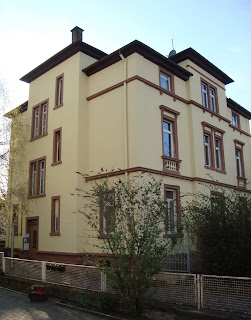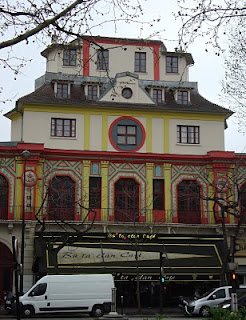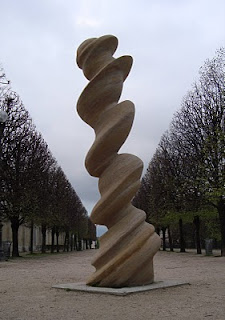Review of:
Tintin and the secret of literature
Tom McCarthy
Granta 2006
Many years ago, I started my writing career at the school magazine with a series of articles about comics (mostly of the French variety), covering Asterix and Lucky Luke in the first two instalments, before moving on to a German cartoonist. I meant to write an article about Tintin as well, but never got round to doing it, partly because I felt there were hidden layers of meaning that I didn’t really understand, and at the time I didn’t have access to secondary literature about Tintin (and the world-wide web hadn’t been invented yet).
Now, thirty years later, thanks to Tom McCarthy’s book, I finally gained admission to the hidden parts of the Tintin universe, which (not surprisingly) is in large parts inspired by the family history of its creator, Hergé. Characters like the Dupond/t (Thom(p)son) twins and Tchang are modelled on real life – Hergé’s father and uncle were twins and wore bowler hats, and the real life Tchang became Hergé’s lifelong friend. Prof. Tournesol (Calculus) is widely recognised as a caricature of the scientist/explorer Auguste Piccard.
But beyond the fairly trivial level of copying caricatures of real people into his fiction, deeper issues of Hergé’s life story provide recurring themes for his work, including authenticity versus fakeness, coded and decoded messages, denial of inherited status, stowaways and intruders, and being caught out by rapid regime change, as McCarthy competently explains.
Hergé started his career with a dangerous level of political naïveté, simply mirroring prevailing rightwing prejudice in his early works. Racism allegations against Tintin au Congo are provoking debate and calls for censorship to this day. His lucky break came in 1934 when he met the Chinese student Tchang Tchong Jen, who helped him with details for the fifth Tintin book, Le lotus bleu. From that point onwards, his world view became much more sophisticated and balanced, and he went on to create some of the undisputed masterworks of the French “ligne claire” tradition of comic books.
Some of the Tintin books, like Le lotus bleu, are instantly recognisable as perfect works of comic art. With others, like Les bijoux de la Castafiore, I initially had the impression that they were “fillers” produced at times when Hergé ran out of inspiration. Surprisingly, the Castafiore volume is among those about which McCarthy finds the most interesting things to say, harking back to an obscure novella by Balzac that I was completely unaware of, and unravelling multiple layers of philosophy hidden underneath a seemingly trivial and uneventful story. I’ll definitely have to read that one again, or ideally, the whole set of 24 books (I left most of them behind when I left home).
The Tintin universe is a mixture of (caricatured) real world places and events on one hand, and some completely imaginary material on the other. McCarthy draws on previous research from other authors uncovering the real underlying the imaginary, and then tries to construct an argument in favour of Tintin as literature, based on this and the big philosophical questions it addresses. As the ever growing book series “… and philosophy” shows, there seems to be a readership for the philosophical analysis of popular culture.
Personally, I think the reality check is more important than the philosophy link. As almost anybody can dream up imaginary characters in imaginary worlds and let them muse about philosophical questions, I feel that the work owes its depth to its roots in the real world, many of which are so artfully concealed that it takes an expert guide like McCarthy to point them out to us lay readers. Reading the books all those years ago, I could only intuitively sense that there was a complex reality hidden behind the simple line drawings.
PS I prepared this review earlier this week, but now seems a good time to post it as I've just come back from Belgium. Saw Within Temptation in Antwerp (review of this to follow) and of course lots of Tintin merchandise in Brussels, below an example of a modest shopwindow display:

And this is part of a mural that most Eurostar passengers will have seen, it's on the wall you walk towards when you come out of the Eurostar arrivals area and go towards the main station concourse:

PS The book is due to come out as paperback edition in March 2011:



























